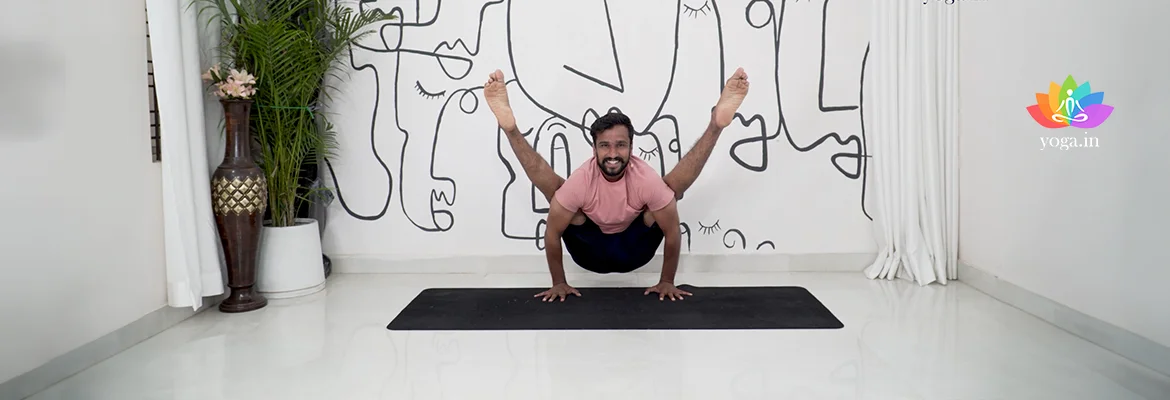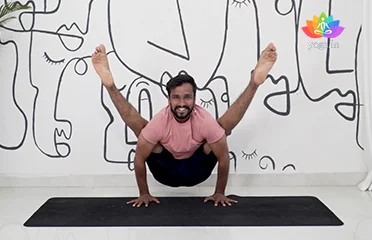Sit in Dandasana.
Introduction to the Asana
The Sanskrit name is derived from Tittibha (तिट्टीभा) meaning fly or insect and asana (आसन) meaning posture or seat.
Step to get in the pose
-
-
Spread the legs beyond your hips width, with your hands placed to the floor in between the legs.
-
Bend your knees bringing them closer to armpits.
-
Now lifting your butts off the floor, sit on your feet.
-
Take your hands behind your heels bringing the shoulders in contact with your inner knees.
-
Squeezing the elbows inwards sit back on that elbow-shelf, resting your buttocks in between the elbows.
-
Balancing the weight on hands walk on your toes forward, slowly lifting the feet off the floor.
-
Inhale and straighten the legs forward shifting the sitting bones behind and rolling the thighs together.
-
Look forward with toes pointing up and thighs hugging the upper arms.
-
Raise the legs as far as possible by opening them towards the ceiling.
-
Hold the pose for at least 15 seconds breathing gently.
-
Exhale bending your knees and bringing your feet to the floor.
-
Sit down on your buttocks, release the shoulders, and relax.
Common mistakes and pitfalls
-
Over-stretching of muscles might contribute to strain or injury.
Benefits
-
Strengthens the muscles of the shoulders, arms and wrists
-
Gives a good stretch to the back torso and the inner groins.
-
Tones the abdominal muscles
-
Burns fat.
-
Strengthens the belly and improves the digestive system and metabolism.
-
Calms your mind and improves your sense of balance.
-
Help radiate your inner glow.
Contraindication
-
Avoid in case of any injury or surgery in the arms, legs, shoulders, elbow, wrist, hips, rib cage, hamstrings, or lower back.
-
Avoid in case of lower back pain.
-
Avoid during pregnancy and post-surgery.
-
Avoid if suffering from high or low blood pressure or any cardiac ailments.
-
Avoid if you are suffering from headaches, vertigo, dizziness, migraine, epilepsy or depression.
-
Avoid if you lack body-breath connection.
-
Avoid during pregnancy, post-natal care and Menstruation.




